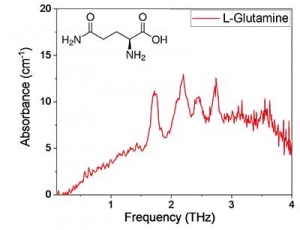Master thesis position: Near field THz concentration for micro bio samples analysis
Context and objectives:
The TeraHertz range (between 0.1 and 10 THz) is at the crossroads between optics and electronics and is currently booming. Indeed, THz waves allow non-invasive probing of matter and thus help to identify the composition of many materials, in particular biological materials. TeraHertz spectroscopy, based on the use of femtosecond lasers, has been developed in order to have a better understanding of molecules such as proteins or DNA that possess vibrations in the TeraHertz range.
IEMN (Institute of Electronics, Microelectronics and Nanotechnologies) has a characterization room at the international state of the art, where a TeraHertz time-domain spectroscopy (THz-TDS) is set up. This setup is used to analyze solid samples (characterization of semiconductors, of insulators…), liquids (aqueous solution, polar or non-polar solvent) or gases (in particular for the TeraHertz gas laser application).
Figure: left, schematic of the proposed device, middle representation of its far field, right the first realization.
Nevertheless, the study of biological samples in their natural state is limited by their size. Indeed, most of the biological objects: proteins, DNA strands, viral capsids, cells or bacteria, are much smaller than the THz wavelengths. The direct consequence of this size mismatch is that it forbids the use of any propagative technics to analyze a single object. Since several years, our group has developed a device made of a metallic hollow waveguide with one injection and one extraction antenna at each edge. The used antenna are based on the usual Vivaldi antenna, however THz spectral range has the specificity of relatively small wavelengths compare to radio waves making the antenna hundreds time bigger than it.
In this internship, the student will have to propose a design adapted to the specificity of the THz range to enable broad band THz spectroscopy of biosamples and characteristic this device using the THz time-domain spectroscopy setup and THz camera to measure its far field. Finally, the device will be used for Biophotonics experiments.
Missions:
The proposed work include a simulation part where the student will design the device using CST. It will be followed by a fabrication part exploiting the micro and nano fabrication facilities at IEMN. Then, will follow characterization and use of the device. In the most optimistic case, a microfluidics integration is envisioned. Considering the quantity and diversity of the tasks of the project, the precise work of the student will be discussed and will depend on the taste, capacity and will of the candidate.
We are looking for physics or engineering master student or equivalent. Having one of the following skills would greatly increase the chance of success of any application: Experimental optics – Electromagnetism – Photonic simulation- Micro-nano fabrication
Environment:
The student will work with a team of experienced researchers in the THz-Photonics group at IEMN Laboratory (https://photoniquethz.univ-lille.fr/en/). The group has a long lasting experience in the conception and realization of THz optoelectronic devices, and is fully equipped to carry out this project. The Laboratory hosts a 1500m2 clean-room with state of the art growth and fabrication facilities. IEMN is located in Lille, the capital of French Flanders, a vibrant city close to the Belgian border at 50 min by train from Paris-CDG airport.
We are looking for a physics or engineering master student or equivalent. Having one of the following skills would greatly increase the chance of success of any application: Experimental optics – Spectroscopy – Python coding
The exact tasks in which the student will be involved will be discussed together with him/her and the team and will depend on its capacities and taste as the needs of the team. We strongly advise any potential candidate to contact us by email or elsewhere to begin the discussion before any formal application.
Skills:
We are looking for physics or engineering master student or equivalent. Having one of the following skills would greatly increase the chance of success of any application: Experimental optics – Spectroscopy – Python coding -µ-nano fabrication
The exact tasks in which the student will be involved will be discussed together with him/her and the team and will depends on its capacities and taste as the needs of the team. We strongly advice any potential candidate to contact us by email or elsewhere to begin the discussion before any formal application.
Key words: TeraHertz, spectroscopy antenna, wave propagation, Microfluidics
Possibility to go on with a PhD?
Yes, we are looking for two PhD student in the group next year one of them will have to deal with a really close subject.
Envisaged fellowship?
We already applied for several nationwide and European grants but the safest funding way will be to get a university of Lille grant. We are highly supported by the university and the chance of success are very high in this call for a good candidate.
Unité d’accueil :
IEMN UMR CNRS 8520
Centre de Micro et Nano fabrication
Avenue Poincaré
59652 VILLENEUVE D ASCQ CEDEX
www.iemn.fr
Contact: Dr Romain Peretti
















